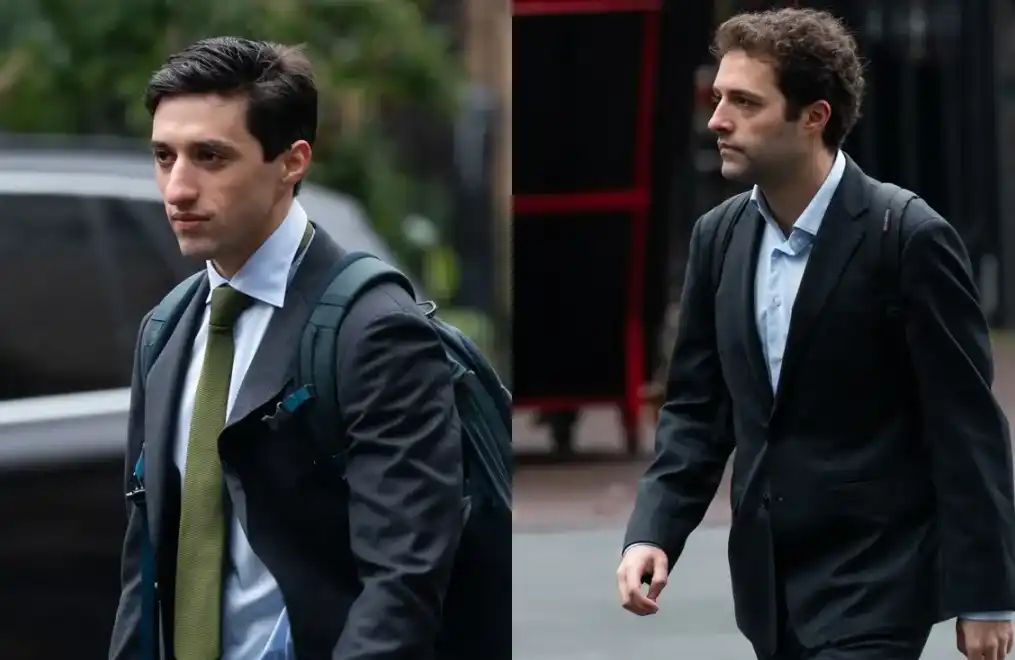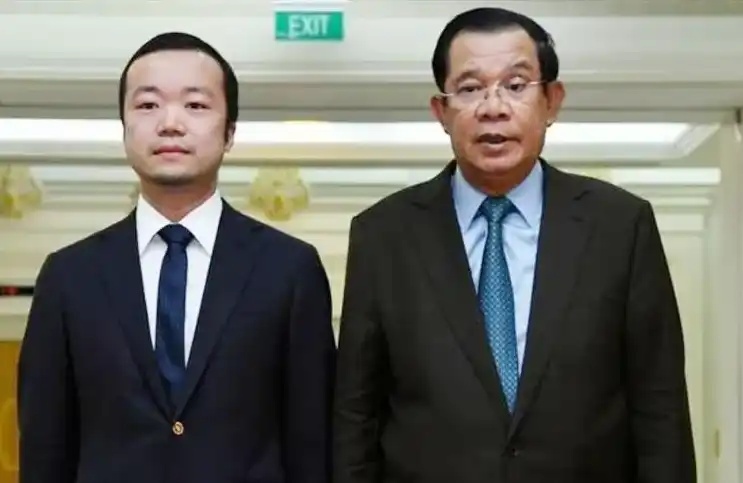$15 Billion Changing Hands: How Was Supposedly Decentralized BTC "Seized" by the US Government?
Original Title: "$15 Billion BTC Ownership Transfer: US Department of Justice Eliminates Cambodian Prince Group, Transforming into World's Largest BTC Whale"
Original Author: Ethan, Odaily Planet Daily
A filing in the US District Court for the Eastern District of New York has caused a stir in the crypto world.
On October 14, the US Department of Justice announced criminal charges against the founder of the Cambodian Prince Group, Chen Zhi, and filed for the seizure of 127,271 BTC under his control, worth approximately $15 billion, making it the world's largest Bitcoin judicial seizure case.
"The most significant virtual asset seizure operation in history," the Department of Justice stated in its announcement. Furthermore, officials emphasized that these BTC were not held on exchanges but were instead held long-term by Chen Zhi in self-custodied private wallets. This seems to shake the core belief of the crypto community: "Control the private keys, and the assets cannot be confiscated."
In reality, even without breaking the encryption algorithm, the US government can still achieve asset "judicial transfer" through legal procedures. Through on-chain tracking and international cooperation, law enforcement agencies identified Bitcoin dispersed across multiple addresses but all controlled by Chen Zhi. The court subsequently issued a seizure order to lawfully transfer these assets to addresses controlled by the US government, entering a judicial custody process pending a final civil forfeiture judgment.
Meanwhile, the US Department of the Treasury's Office of Foreign Assets Control designated the "Prince Group" as a transnational criminal organization and imposed sanctions on 146 related individuals and entities; the US Financial Crimes Enforcement Network, under the Patriot Act, identified the Huione Group as a "primary money laundering concern," prohibiting its access to the US dollar clearing system. The UK also simultaneously imposed asset freezes and travel bans on Chen Zhi and his family members.
In the context of the crypto market, this moment is highly symbolic. It is not only an enforcement action against a criminal group but also a public demonstration of a national authority exercising direct control over on-chain assets. 127,271 BTC—this number, enough to change market sentiment and regulatory trends, has been inscribed in the history of Bitcoin regulation, becoming a key milestone.
From Fujian Businessman to Fraud Empire: Chen Zhi's Capital Deployment and Industrialized Crimes
The US Department of Justice's indictment has revealed another side of Chen Zhi and his Prince Group.
In Southeast Asian media reports, Chen Zhi was once hailed as the "Cambodian New Nobility," and his Prince Group, touted as a multinational conglomerate with businesses spanning real estate, finance, and other fields. However, the US Department of Justice alleges that behind the scenes lies a "dual-layer operational logic": outwardly a legitimate business empire but internally a fund control and settlement system serving fraudulent gains.
Chen Zhi, originally from Fujian, made a name for himself in Cambodia in his early years through the gambling and real estate industries. After obtaining Cambodian citizenship in 2014, he quickly obtained multiple development licenses and financial licenses through his political and business connections. He did not stop at local business but rather, through the establishment of a British Virgin Islands company, a Singapore holding structure, and other means, he built a complex cross-border asset allocation strategy. He is also suspected to hold British citizenship, creating barriers between different jurisdictions. In April 2024, the Cambodian King issued a royal decree appointing Chen Zhi as an advisor to Senate President Hun Sen, demonstrating his deep-seated political and business influence in the country.

Cambodian King Norodom Sihamoni issued a Royal Decree on April 19, 2024, appointing Duke Chen Zhi, Chairman of Prince Group, as an advisor to Cambodian Senate President Prince Hun Sen.
Accusations claim that Chen Zhi established an "industrialized" telecommunications fraud system in Cambodia. Judicial documents repeatedly mention the concepts of "campus" and "phone farm," highlighting its highly systematic operation:
· Physical Base: The so-called "campus" is registered under the guise of outsourcing services but actually operates in a closed-off manner.
· Manpower Control: Overseas workers are lured in through "high-paying jobs" but often face restrictions on personal freedom upon entering the country.
· Standardized Operations: Each operator manages hundreds of "relationship lines," using a uniform script for social and investment enticement, with a process similar to customer relationship management.
· Technological Disguise: The "phone farm" uses a large number of SIM cards and IP proxies to create virtual identities and locations to conceal the true source.
This is not a traditional scattered scam operation but rather a well-organized "online scam factory." All scam funds ultimately flow into Prince Group's financial layer. Reportedly, Chen Zhi's ill-gotten gains were used for extremely lavish expenses, including the purchase of luxury watches, yachts, private jets, and even a Picasso painting auctioned in New York.

Prince Group's Two-Tier Business Structure Overview
Fund Traceability: From Hacker Plunder to Fraud Laundering
The origin of the 127,271 BTC in this case is particularly complex. According to reports from on-chain analysis firms such as Elliptic and Arkham Intelligence, these bitcoins highly correlate with a large-scale mining company named "LuBian" that suffered a theft incident in 2020.
The records show that in December 2020, an anomaly occurred in the LuBian core wallet, leading to the theft of approximately 127,426 BTC. On-chain, there was even a small amount transaction with a message from LuBian to the hacker's address: "Please return our funds, we'll pay a reward." Subsequently, this large amount of funds remained dormant for a long time until they became active in mid-2024, with their movement path overlapping with a wallet cluster controlled by the Prince Group. (Latest development: on October 15, after three years of inactivity, the LuBian-related wallets transferred all 9,757 BTC, worth $1.1 billion)
This implies that the investigation has revealed not a simple "fraud-laundering" chain, but a more complex path: "Hacker loots mining farm → Long-term dormancy → Inclusion in a criminal organization's fund pool → Attempt to launder through mining and off-exchange transactions." This discovery has elevated this case to a new level of complexity: it involves not only a hacker attack and mining security vulnerabilities but also reveals how gray exchange networks absorb and conceal huge funds from unusual sources.
How Was Bitcoin Seized?
For the cryptocurrency industry, the profound impact of this case goes far beyond taking down a fraud mastermind; it lies in the complete demonstration by judicial and intelligence agencies of a set of processes for dealing with on-chain assets: On-chain tracking → Financial blockade → Judicial takeover. This is a real-world closed-loop that seamlessly integrates "on-chain tracing capabilities" with "traditional judicial power."
Step One: On-Chain Tracking — Locking the "Funds Container"
The anonymity of Bitcoin is often misunderstood. In fact, its blockchain is a public ledger, with traces of every transaction. The Chen Zhi Group attempted to launder money through the classic "spray-funnel" model: dispersing funds from the main wallet to a massive number of intermediate addresses like a sprinkler watering a garden, briefly pausing, and then reaggregating back to a few core addresses like small streams flowing into a river.
While this operation may seem complex, from an on-chain analysis perspective, frequent "dispersion-reaggregation" behaviors actually form unique graph features. Investigative agencies (such as TRM Labs, Chainalysis) use clustering algorithms to accurately map out a "funds backflow map," ultimately confirming that these seemingly dispersed addresses all point to the same controlling entity — the Prince Group.
Step Two: Financial Sanctions — Cutting Off the "Cash-out Channel"
After locking the on-chain assets, U.S. authorities initiated dual financial sanctions:
· Office of Foreign Assets Control (OFAC) Sanctions: Chen Zhi and related entities were listed, and any U.S.-regulated institution is prohibited from engaging in transactions with them.
· Financial Crimes Enforcement Network (FinCEN) §311 Provision: Designates a key entity as a "Primary Money Laundering Concern" to thoroughly cut off its access to the U.S. dollar clearing system.
At this point, although these bitcoins can still be controlled by the private key on the blockchain, their most critical value attribute—the "ability to be exchanged for dollars"—has been frozen.
Step Three: Judicial Takeover—Completing "Ownership Transfer"
The final confiscation is not based on violently cracking the private key but rather by directly taking over the "signing authority" through a legal process. Law enforcement officers, with a search warrant, obtain the mnemonic phrase, hardware wallet, or transaction permissions, and then, just like the original owner of the asset, initiate a legal transaction to transfer the bitcoins to a government-controlled custodial address.
At the moment this transaction is confirmed by the blockchain network, the "legal ownership" and "on-chain control" are unified. The ownership of these 127,271 BTC, in both a technical and legal sense, formally transfers from Chen Zhi to the U.S. government. This series of moves clearly demonstrates that in the face of state power, the principle that "on-chain assets are inviolable" is not absolute.

After Confiscation, Where Will the Bitcoins Go?
When 127,271 BTC is transferred from the fraud empire's wallet to the "U.S. Government Controlled Wallet," a more strategically significant question arises: the ultimate destination of this massive asset batch will reveal how the U.S. government positions Bitcoin—whether it is the urgently liquidated "stolen property" or the encompassed "strategic asset"?
Historically, the U.S. government has handled the confiscation of digital assets in several ways. The bitcoins from the Silk Road case were transferred to private institutional investors through a public auction after completing the judicial process, with Tim Draper being one of the auction buyers. The BTC from the Colonial Pipeline ransom was temporarily held in a government account by the Department of Justice after recovery, used as case evidence and for Treasury record purposes. As for FTX, the current status remains in judicial custody, and it has not been formally confirmed by the authorities as government property; most of the assets theoretically should be used to compensate users within the debt settlement process, rather than directly added to the national treasury reserves.
Unlike the method of handling confiscated bitcoins through public auctions as seen in cases like the Silk Road incident, this case is facing a key variable: In March 2025, the U.S. White House signed an executive order establishing a "Strategic Bitcoin Reserve" mechanism. This means that the BTC in the Chen Zhi case is likely to not be simply auctioned off but directly converted into reserve assets held by the government.
Thus, the United States is building an unprecedented "on-chain asset control loop": tracking on-chain to lock the target — using sanctions to cut off its fiat export — completing the legal ownership deprivation through judicial procedures — and ultimately transferring the assets into government control. At the core of this process is not to restrict market circulation, but to redefine the legitimate ownership of "key control".
Once the judicial process confirms the asset as proceeds of crime, its nature changes from "personally controlled cryptocurrency" to "digital asset certificate under national jurisdiction".
With the transfer of 127,271 BTC, the United States has become the sovereign entity holding the most Bitcoin globally. This is not only an unprecedented confiscation action, but also heralds the opening of an era where national power systematically controls on-chain assets.
Welcome to join the official BlockBeats community:
Telegram Subscription Group: https://t.me/theblockbeats
Telegram Discussion Group: https://t.me/BlockBeats_App
Official Twitter Account: https://twitter.com/BlockBeatsAsia


 Forum
Forum Finance
Finance
 Specials
Specials
 On-chain Eco
On-chain Eco
 Entry
Entry
 Podcasts
Podcasts
 Activities
Activities
 OPRR
OPRR









